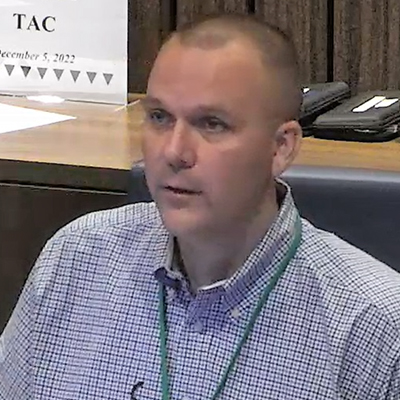Real-time Co-optimization Could be Back in 2023
ERCOT plans to resuscitate the development of real-time co-optimization, staff told the Technical Advisory Committee Monday.
The market tool was paused last year because of staffing constraints following the February winter storm. (See “Passport Pushed Back 18 Months,” ERCOT Technical Advisory Committee Briefs: April 28, 2021.)
Dave Maggio, ERCOT director of market design and analytics, said plans to resume RTC’s development in mid-2023 are “on the radar.” Its delivery is dependent on staffing and other requirements that may come out of the market design, he said.
RTC was originally scheduled to go online in 2024. Maggio said assuming a mid-year kickoff next year, it will be delivered in 2026.
Staff has estimated it will cost as much as $55 million to implement the RTC tool, which procures both energy and ancillary services every five minutes. ERCOT’s Independent Market Monitor has called for the grid operator to add the tool for several years.
Maggio will return to TAC’s Jan. 24 meeting with additional details on scheduling and timing.
No Major Changes to AS Methodology
TAC endorsed staff’s annual recommendations for the proposed methodology for computing ancillary service quantities in 2023, which included making no changes to the methodologies used to compute regulation service and responsive reserve service (RRS) requirements for 2023.
Staff is proposing changes in the methodology used to compute minimum non-spinning reserve service requirements in 2023 by shifting from a 6- to 10-hour ahead net load forecast error. Upon its implementation, they are recommending computing ERCOT contingency reserve service requirements as the sum of capacity needed to recover frequency following a large unit trip and capacity needed to support sustained net load ramps.
Staff is also proposing to revise the minimum RRS-primary frequency response limit next year to 1,390 MW, aligning it with an increase to ERCOT’s interconnection frequency response obligation.
The recommendations were added to the TAC’s combination ballot.
Lange Welcomes Return as Chair
South Texas Electric Cooperative’s Clif Lange, who chairs TAC, told members he is open to returning to the leadership position next year, assuming he remains a committee member.
Lange, who was recently promoted as the cooperative’s general manager, said he had been approached by several other members about continuing as chair.
“I wasn’t sure that that was going to be possible,” Lange said, “but after having had some time to reflect and think about it, I’m certainly willing if TAC is willing to have me as chair for next year.”
The Board of Directors will confirm TAC’s representatives during its annual membership meeting Dec. 20.
TAC Endorses 10 Revision Requests
The committee endorsed a system change request (SCR821) that would address operational issues by allowing transmission and distribution service providers to set the voltage set point target information provided to distribution generation or energy storage resources.
The measure passed unopposed but with abstentions from CenterPoint Energy, Oncor Electric Delivery and Texas-New Mexico Power, members of the investor-owned utility segment.
The combination ballot passed with one abstention. It included five nodal protocol revision requests (NPRRs), two revisions to the Nodal Operating Guide (NOGRRs), and single changes to other binding documents (OBDRR) and the Resource Registration Glossary (RRGRR) that, if approved by the board, would:
-
- NPRR1128: set an ancillary service offer floor $0.01/MW lower for fast frequency response (FFR) than for other RRS categories to allow FFR procurement up to the current limit, without proration with other RRS categories.
- NPRR1132: specify that during local cold weather conditions, each qualified scheduling entity (QSE) must update its generation resources and energy storage resources current operating plan, real-time telemetry, and outage and derate reporting to reflect any limitations. It also requires each resource entity to provide resource-specific cold weather minimum temperature limits, hot weather maximum temperature limits, and alternate fuel capability information in its submitted resource registration data and update this information as necessary.
- NPRR1138: require each resource entity to ensure the reactive capability curve for any intermittent renewable resource accurately reflects its reactive capability when it is not providing real power or is operating at lower levels of real power output.
- NPRR1152: remove the protocol requirements to submit emergency operations plans (EOPs), weatherization plans, and declarations of summer/winter weather preparedness; revises procedures for submitting declarations of natural gas pipeline coordination with natural gas generation resources; revises the list of items considered protected information to remove references to weatherization plans and add protections for information relating to weatherization activities; and revises the list of ERCOT critical energy infrastructure information to clarify language concerning EOPs and add protections for information relating to weatherization activities.
- NPRR1154: update language to allow for a qualified alternate resource to be considered in calculating the availability reduction factor for the firm fuel supply service (FFSS) resource and provides a new settlement billing determinant providing the FFSS award amount per QSE per FFSS resource by hour.
- NOGRR226: add provisions for transmission operator “anti-stall” automatic firm load shedding at 59.5 Hz to mitigate the risk of a total system-wide blackout.
- NOGRR243: modify the Nodal Operating Guide’s load-shed table to include separate load-shed obligations for the winter and summer seasons that align with Senate Bill 3 directives.
- OBDRR043: align the operating reserve demand curve’s methodology with NPRR1148’s revisions, approved in August, in calculating the real-time reserve price adder.
- RRGRR032: add data required to be shared with ERCOT as the reliability coordinator, balancing authority and transmission operator in considering cold weather limitations in its operational planning analysis, real-time monitoring, real-time assessments, and other analysis functions. The ISO also requires this information for hot weather limitations and making this a requirement for distributed generation resources and distributed energy storage resources.



